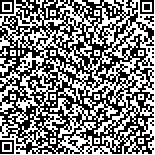|
|
|
| |
|
|
| 本文已被:浏览 2681次 下载 1969次 |

码上扫一扫! |
|
|
| 利用RAPD和AFLP标记初步构建太平洋牡蛎的遗传连锁图谱 |
|
李 莉, 郭希明
|
|
中国科学院海洋研究所实验海洋生物学开放研究实验室
|
|
| 摘要: |
| 利用RAPD和AFLP标记,以一回交家系[(Miyagi×Hiroshima)×Miyagi]为作图群体, 构建了太平洋牡蛎的遗传连锁图谱。用经过筛选的33个RAPD引物和11个AFLP引物组合, 对父母本和80个子代个体进行了遗传分析。共得到母本分离标记193个, 其中144个符合1∶1孟德尔分离规律。父本分离标记156个, 其中111个符合1∶1孟德尔分离规律。雌性框架图包括99个遗传标记, 定位在12个连锁群中, 覆盖985.2cM, 标记间平均间隔11.3cM。另外有3个三联体, 7个连锁对, 图谱共覆盖1165.7cM。雄性框架图包括72个遗传标记, 分布在8个连锁群, 覆盖811cM, 标记间平均间隔12.7cM。另外有4个三联体, 3个连锁对,图谱共覆盖931.8cM。
|
| 关键词: 太平洋牡蛎,RAPD,AFLP,分子标记,遗传连锁图谱,基因组DNA |
| DOI:10.11693/hyhz200305009009 |
| 分类号: |
| 基金项目:国家杰出青年基金资助项目,39825121号;国家自然科学重点基金资助项目,30140017号;美国NJCST资助项目,00-2042-007-20号 |
|
| THE CONSTRUCTION OF A PRELIMINARY GENETIC LINKAGE MAP IN THE PACIFIC OYSTER USING RAPD AND AFLP MARKERS |
|
LI Li, GUO Xi-Ming
|
|
Experimental Marine Biology Laboratory, Institute of Oceanology, The Chinese Academy of Sciences
|
| Abstract: |
| RAPD and AFLP markers were used to construct the primary linkage map in a backcross population [(Miyagi× Hiroshima) × Miyagi] for the Pacific oyster Crassostrea gigas. Thirty-three RAPD primers and 11 AFLP primer combinations were selected from 120 RAPD and 40 AFLP primer combinations. The primers produced 338 RAPD and 883 AFLP fragments in the parents and 80 progeny of the mapping family. Among the 1221 fragments, 381 were polymorphic between the parents. One hundred and ninety-three in the female and 156 in the male were segregating markers, among which 144 female and 111 male markers were in agreement with the Mendelian 1:1 ratio, and 94 segregating markers were distorted markers. Twenty-two (23.4%) distorted makers were heterozygote-deficiency, and 72(76.6%) were homozygote-deficiency. Two genetic linkage maps were constructed based on the female and male 1∶1 segregating markers. The female framework map was composed of 99 segregating markers which were linked in 12 linkage groups (with or more than 4 markers), covering a total of 985.2cM with the average interval of 11.3cM. With 3 triplets and 7 doublets, the total length of the female map was 1165.7cM. Additionally, 15 markers were unlinked and 7 markers were linked but unmapped in the female map. For the male map, the framework map contained 72 markers which were linked in 8 large linkage groups (with or more than 4 markers), spanning 811cM with the average marker density of 12.7cM. The other linked markers were resolved into 4 triplets and 3 doublets. The total male map covered 931.8cM. The unlinked and unmapped markers in the male map were 17 and 4, respectively. The estimated genome length of the Pacific oyster was 1256.2cM for the female and 1004.7cM for the male, and the observed coverage was 78.4% for the female and 80.7% for male map. The evaluation of the map, the reason for the high percentage of distorted markers and the features of RAPD and AFLP as mapping markers were also discussed in the paper.
|
| Key words: Pacific Oyster Crassostrea gigas, RAPD, AFLP, Marker, Genetic mapping, Genome DNA |
|
|
|
|
|
|
